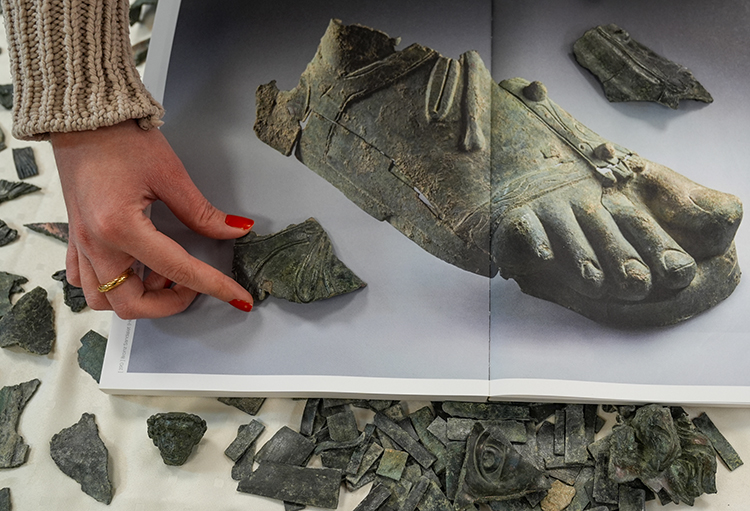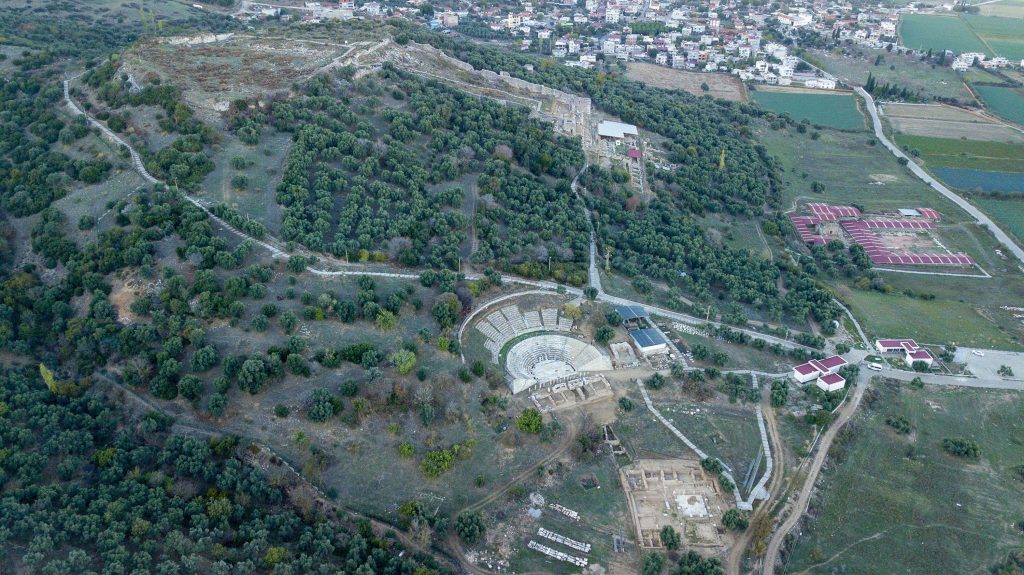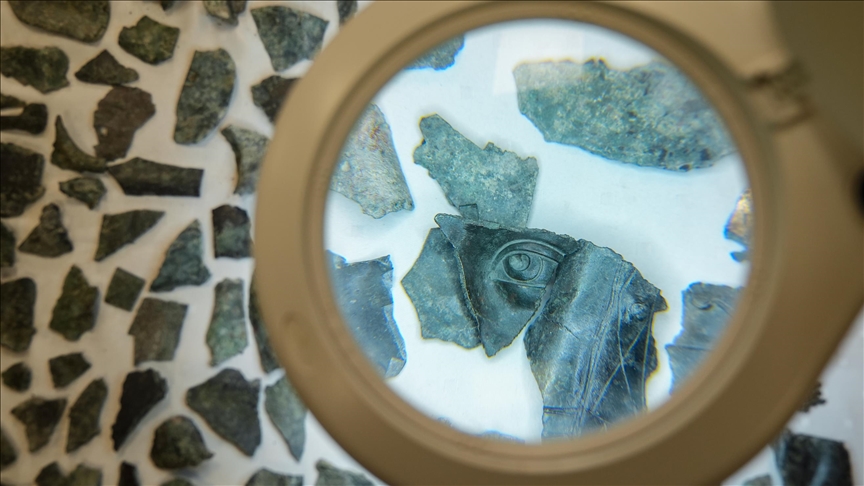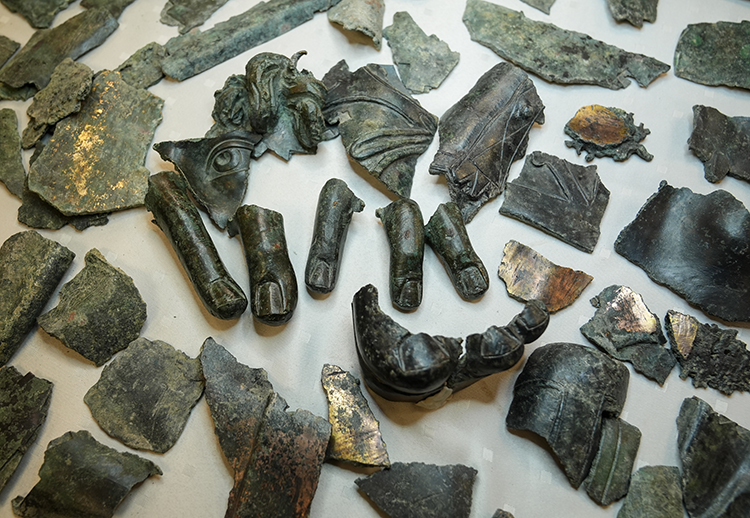
Discovery of 2,000 bronze sculpture fragments in Metropolis’ junkyard
Archaeologists unearthed nearly 2,000 bronze statue fragments in the scrapyard area of the ancient city of Metropolis.
Metropolis Ancient City, located in the Torbalı district of Izmir, Türkiye, is a significant archaeological site that dates back to the 3rd century BC. This ancient city was particularly important during the Hellenistic and Roman periods, serving as a vital center for trade and culture.

The excavations are being conducted under the “Heritage for the Future Project” of the Ministry of Culture and Tourism, in collaboration with the Sabancı Foundation, and are led by Prof. Dr. Serdar Aybek, a faculty member of the Department of Archaeology at Dokuz Eylul University.
Prof. Aybek stated that they have uncovered Hellenistic period statue fragments and Roman period figures in the area known as the junkyard of the city, saying, “The findings are extraordinary for our profession. We have found approximately 2,000 bronze statue fragments.”
He added, “The collection and recycling of statues in the Late Antiquity period provide concrete evidence in Metropolis. Among the findings are pieces such as heads, eyes, fingers, and sandals.”

“With the transition from mythological beliefs to monotheistic religions and the dominance of Christianity in the region during Late Antiquity, mythological bronze statues from the past were dismantled. Although there is currently no archaeological data to support this claim, we can say that a significant portion was used in coin minting. Instead of re-manufacturing, the bronze group, mostly consisting of damaged statues that had lost their validity for various reasons, was prepared by the ancient junk dealer to be broken down and melted.”
Prof. Dr. Aybek emphasized the great importance of bronze statues in antiquity, noting that the findings could belong to the statues erected in honor of benefactors mentioned in the inscription of “Apollonios of Metropolis.”

He pointed out that the square and rectangular bronze plates found alongside the statue fragments indicate activities related to statue production or repair in Metropolis, stating:
“The square and rectangular bronze plates we found are very important as they indicate production. Some statue bodies have square holes. These holes are used to cover the openings created by iron pins that hold the inner core during the mold stage of statue production. The plates demonstrate that there was activity related to bronze statue production or repair in Metropolis.”
Cover Photo: Mahmut Serdar Alakuş/Anadolu Agency
You may also like
- A 1700-year-old statue of Pan unearthed during the excavations at Polyeuktos in İstanbul
- The granary was found in the ancient city of Sebaste, founded by the first Roman emperor Augustus
- Donalar Kale Kapı Rock Tomb or Donalar Rock Tomb
- Theater emerges as works continue in ancient city of Perinthos
- Urartian King Argishti’s bronze shield revealed the name of an unknown country
- The religious center of Lycia, the ancient city of Letoon
- Who were the Luwians?
- A new study brings a fresh perspective on the Anatolian origin of the Indo-European languages
- Perhaps the oldest thermal treatment center in the world, which has been in continuous use for 2000 years -Basilica Therma Roman Bath or King’s Daughter-
- The largest synagogue of the ancient world, located in the ancient city of Sardis, is being restored











Leave a Reply